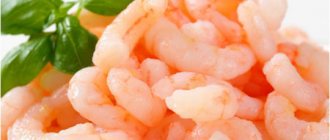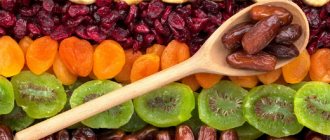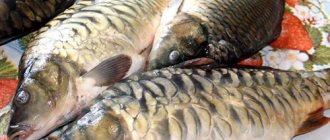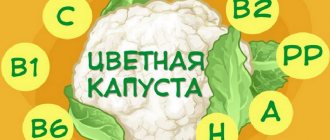How to choose the right product so that it brings benefits and not harm?
Watermelons contain a high concentration of beneficial components.
These substances have a beneficial effect on the digestive tract and the functioning of the body as a whole. The berry improves immunity, normalizes metabolic processes, replenishes the supply of vitamins and creates a good prevention of some disruptions in the functional state of the gastrointestinal tract.
https://www.youtube.com/watch?v=a_KituZddT0
Beneficial features:
- diuretic effect due to the large amount of water contained in the pulp;
- normalization of stool, elimination and prevention of constipation;
- elimination of swelling;
- improvement of cell division processes;
- increasing the protective functions of the body;
- choleretic effect;
- restoration of electrolyte balance;
- prevention of urolithiasis;
- removing harmful cholesterol from the body;
- cleansing the body of toxic products;
- improvement of intestinal motor function.
So, now you know that in acute cases of the disease it is necessary to avoid watermelon, but in cases of chronic pancreatitis it is allowed. But, before you buy fruit from a store counter, you need to remember very simple rules.
To prevent juicy watermelon slices from leading to increased symptoms of pancreatitis, it is necessary to consume a ripe, high-quality sweet product.
Time to buy
If you have an inflamed pancreas, you should not buy early varieties of watermelon. Such a product is usually grown using a variety of chemicals. If you eat an early fruit, this can negatively affect the condition of the pancreas.
It is best to buy watermelon in the second half of August or, for example, in September.
Size
The most optimal size for such a product is from 5 to 7 kg. You should not buy one that is too small, as there is a possibility that the watermelon is simply unripe.
The benefits of watermelon for the body and gastrointestinal tract
Watermelon is a juicy and tasty berry, loved by many. In addition, the fruit of this plant of the pumpkin family also has useful qualities:
- It is a natural diuretic and choleretic agent;
- Reduces tissue swelling;
- Strengthens the pancreas and stabilizes the production of digestive enzymes;
- Clears the intestines from the accumulation of feces and normalizes stool;
- Rich in lycopene, which has anti-inflammatory properties;
- High fiber content improves metabolic processes in the body and the functioning of the digestive system as a whole;
- Contains iron and magnesium, which improves cardiac function;
- It is a source of folic acid and B vitamins;
- Among simple sugars, fructose predominates rather than glucose, which relieves the pancreas of additional stress;
- Low calorie product.
| Vitamins | Minerals |
| Beta-carotene B1 B2 B5 B6 B9 C E PP | Sodium Phosphorus Magnesium Calcium Pectins Potassium Iron |
However, despite all these positive properties, will this melon crop benefit everyone? Is it possible to eat watermelon for pancreatitis and cholecystitis and will this product be harmful? Let's take it in order.
Useful properties of watermelon
The pulp contains a large amount of vitamins, minerals, and various compounds. Together, they have a beneficial effect on the body, nourish, strengthen the immune system, remove toxins and much more.
Useful properties of watermelon:
- It has a diuretic effect, eliminates congestion in the kidneys, gall bladder, and urinary tract. It is a natural remedy for nephritis and urolithiasis. Potassium contained in the composition is capable of breaking down salt compounds, stones, and cleansing the urinary system. Eliminates the feeling of heaviness and pain. By eliminating congestion in the gallbladder, the condition of the pancreas improves.
- Watermelon normalizes blood pressure in hypertension, strengthens blood vessels, improves heart function, prevents stroke and heart attack. Containing magnesium, potassium, carotenoids, and citrulline reduce the load on blood vessels and lower blood pressure.
- The berry does not contain fats or harmful cholesterol, so patients with diabetes can eat it. Despite the fact that the composition contains a large amount of sugar, it does not burden the pancreas if you eat the berry in a normal dosage.
- Increases sexual activity in men. The beneficial substance arginine contributes to this. The abdominal muscles relax. Blood flow improves, tension is relieved, and a natural erection occurs. Watermelon increases sexual desire and copes with erectile dysfunction. It has no contraindications and can be used at any age.
- Watermelon has antispasmodic properties, so it can relieve pain caused by spasms of the muscular system. An effective remedy for menstrual pain in women, headaches, and abdominal pain.
- The antioxidant effect of watermelon, when consumed frequently, helps prevent the development of gout and improve the condition of patients. Vitamin C enhances the body's protective functions, improves immunity, and dissolves accumulated salts.
- A tasty ripe berry increases vitality due to the presence of a large amount of carbohydrates, which are converted into energy. Improves mood, calms the nervous system, helps cope with depression, stress, and emotional tension.
- It is a source of carotenoids, lycoline, which have properties to prevent the formation of cancer cells. Berry is often included in the diet for cancer patients to slow down the pathological process.
- Watermelon normalizes metabolism, promotes the breakdown of fats, helps you lose excess weight and not gain it again. A tasty dietary supplement should be on every table in late summer and early autumn.
- The berry cleanses the body of toxins and harmful compounds accumulated in the intestines. In diseases of the gastrointestinal tract, including the pancreas, one of the most important functions. Watermelon has a laxative effect, removes feces that have accumulated on the intestinal walls, and copes with constipation.
Watermelon is one of the few berries that has no contraindications for use in diseases of the gastrointestinal tract, but in some cases it can aggravate the situation.
Watermelon for pancreatitis can be consumed not only as an independent product, but also in the form of drinks and even desserts. When preparing them, it is important to consider the absence of harmful additional ingredients. Pancreatitis implies a strict restriction of the daily sugar intake and prohibitions on some sweet ingredients.
Homemade juice:
- You can prepare juice from the pulp using a juicer, blender, or simply squeezing it using gauze.
- There should be no fiber present in the juice (if necessary, the workpiece is filtered again).
- You cannot store fresh watermelon juice (it is recommended to prepare the drink before drinking).
Refreshing mousse:
- To prepare the mousse you will need 700-800 g of pulp, 80 g of sugar or sweetener, 10 g of gelatin.
- Prepare the gelatin according to the instructions (pour in warm water and leave until it swells).
- Grind the pulp into a homogeneous puree.
- Combine all ingredients and re-grind or mix.
- The mousse can be consumed slightly chilled.
Watermelon honey:
- Squeeze the juice from the pulp.
- Bring the mixture to a boil (boil the juice for at least 2-3 minutes).
- Cool the juice and strain through cheesecloth.
- Boil the workpiece again for two or three hours (the liquid should become thick).
- During the cooking process, foam will form, which will need to be skimmed off.
- The cooled mass can be poured into containers and placed in the refrigerator.
- You can supplement the recipe with sweeteners.
Watermelon is tasty and healthy. Its properties speak in favor of watermelon:
- Low in calories (due to which the berry often becomes a dietary product and is used on fasting days).
- High content of antioxidants (lycopene). They prevent aging, fight potential cancers and help stop inflammation.
- Strong diuretic properties, and natural ones at that.
- The presence of folic acid, which improves the quality of breast milk and increases its safety. Folic acid helps digest food proteins and promotes cell division.
- High magnesium content, which promotes the absorption of beneficial minerals. Metal ions normalize the work and interaction of nerves and muscles, help cope with arrhythmia, and are considered an excellent preventative against the appearance of stones in the gall bladder and kidneys (with pancreatitis, these diseases often develop in parallel).
Despite the abundance of nutrients, watermelon is low in vegetable proteins, carbohydrates, and fats. People are accustomed to thinking that these substances bring exclusively benefits to the body. With pancreatitis, such contents strain the stomach due to their high energy value. Watermelon is not the most filling food, but it is healthy.
A distinctive feature of melon is the presence of a large number of natural antioxidants in the fruit. The berry can slow down inflammatory processes, improve the functioning of the digestive system and normalize the process of bowel movement.
Melon contains fructose. This nuance allows the product to be used for patients with diabetes (the pathology in most cases becomes a complication of pancreatitis).
Beneficial features:
- improving the process of food digestion;
- increasing the regenerative properties of tissues;
- normalization of water-salt metabolism in the body;
- accelerating the process of removing sand and small stones from the kidneys (due to its diuretic properties);
- improvement of peristalsis of the digestive organs;
- neutralization of the effects of toxic substances;
- increased vitality;
- improving the condition of the walls of arteries, veins and blood vessels;
- beneficial effect on the immune system.
Potential benefits for the body
Watermelon is a very tasty and juicy giant berry. The fruit of this plant has many beneficial properties. The important qualities of the berry include the following:
- It is a natural diuretic and choleretic agent.
- Formulated with lycopene, renowned for its antioxidant properties.
- Sufficient fiber content improves metabolic processes throughout the body and the functioning of the digestive system.
- Contains magnesium and iron, which can improve heart function.
- It is a supplier of folic acid and B vitamins.
- Among common sugars, fructose predominates rather than glucose. This relieves the pancreas from additional stress.
- Low calorie product.
- The berry is good for the liver in case of hepatitis A, cirrhosis, cholelithiasis.
- Facilitates the course of colds.
- Reduces the risk of diabetes.
The daily consumption rate is up to 2.5 kg of watermelon pulp. But you should receive it gradually, in small portions. This is significant for those people who suffer from kidney stones. The use of this product is extremely important after treatment with antibiotics. With regular use, we can talk about an increase in body tone and immunity.
Chemical composition of watermelon
Watermelon pulp includes:
- pectins;
- calcium;
- proteins;
- sodium;
- potassium;
- phosphorus;
- iron in organic form;
- ascorbic acid;
- magnesium, manganese, potassium salts.
The berry seeds contain 25% oil, which is similar in chemical properties to almond oil.
Despite the many good properties, the berry may not benefit all patients with pancreatitis.
The benefits of watermelon rinds
Berry peels can increase urination. At the same time, they do not irritate the kidneys and urinary tract at all.
The peels should be finely chopped, dried, pour boiling water and leave. For 1 cup of boiling water you need to take 2 tbsp. spoons of crushed peels. The resulting drug is drunk as a diuretic 3 times a day, 100 ml.
If you feel pain in the head, then the scabs should be applied to the forehead. They can also be used to lubricate the skin for burns or after insect bites.
The benefits of watermelon for women
This berry is necessary for women during menstruation and colds.
Watermelon will very quickly help you cope with headaches, blood loss and weakness. It is an excellent moisturizer, only from the inside.
It is important for pregnant women to consume this product, as the berry contains a large amount of folic acid. The berry helps cope with heartburn. Perfectly restores vitality and relieves swelling of the legs.
For children
As for babies, it is not recommended to consume watermelon for children under 1 year of age. Their risk of allergic reactions increases. Children under three years old are allowed to give only one piece of this sweetness.
Fish
Let's look further at what you can eat if you have pancreatitis. Now I would like to say a few words about fish.
- The patient is recommended to consume varieties of lean fish. Fish dishes should be either boiled or steamed.
- In this case, it is necessary to completely exclude salted and fried fish, as well as canned food and caviar.
We suggest you read: Is it possible to keep chickens and turkeys together?
Low-fat fish varieties (0.2-3% fat) are haddock, pike perch, cod, pike, pollock, bream, flounder, etc.
Fish of medium fat content (3 - 9% fat) are sea bream, pink salmon, chum salmon, carp.
Can watermelon provoke an exacerbation of pancreatitis?
Inflammation of the pancreas occurs gradually and goes away very slowly. The only effective treatment is the correct diet, an established diet. Pancreatitis is characterized by indigestion, nausea, pain in the stomach, abdomen, bloating, heartburn, vomiting, and diarrhea.
All unpleasant symptoms are associated with a disruption in the production of enzymes that break down food. A healthy pancreas reproduces enzymes in an inactive state, they pass through the stomach and begin to act in the small intestine. When an organ becomes ill or there is an inflammatory process, enzymes are activated in the stomach and begin to break down its mucous membrane.
Watermelon contains a large amount of fiber, which stimulates intestinal motility, which leads to diarrhea if the stool is disrupted. The presence of high sugar levels forces the pancreas to produce insulin to break it down. If the organ does not have time to recover, the amount of glucose in the blood increases. The consequence is the development of diabetes mellitus.
Considering the above, we can confidently answer that you can eat watermelon with pancreatitis, but everything should be in moderation.
The disease at the progression stage is characterized by the presence of pronounced symptoms - nausea, vomiting, stool disturbances, abdominal pain, stomach pain, flatulence, bloating, etc. The severity of painful symptoms varies. The most severe form requires hospital treatment and absolute fasting for 3 days. After feeling better, liquids and food are gradually introduced into the diet. Fruits and berries are strictly prohibited in the first week of therapy.
Exacerbation of moderate pancreatitis requires treatment at home under the supervision of specialists. The diet is selected depending on the complexity of the clinical picture. If there is nausea, changes in stool, flatulence at the level of discomfort, you can eat a piece of watermelon, but no more. Active consumption of the berry causes fermentation, bloating, colic, pain, and diarrhea. During the period of exacerbation of the disease, you need to minimize the consumption of watermelon or completely abandon it until your health returns to normal.
With the right approach, painful symptoms disappear in 7-10 days, then remission occurs. Since there are a lot of provoking factors - food, lifestyle, nerves, chronic illnesses, exacerbation of pancreatitis can happen at any time. If you have had at least one attack, you must always adhere to proper nutrition.
Experts recommend giving up fatty, spicy, fried foods and introducing fruits, berries, vegetables, and cereals into your diet. Watermelon is not on the list of forbidden foods, so you can eat it for a long time provided you feel well and follow the dosage. An adult is allowed to eat 2 kg of ripe berries per day, but divide it all over the whole day.
Pancreatitis often develops against the background of other chronic diseases or provokes them itself. If the pancreas suffers, the gallbladder, liver, stomach are at risk and vice versa. The diet is selected taking into account all existing diseases. Regarding the use of watermelon, all experts are of the same opinion - during an exacerbation it should not be, but during the remission stage it is possible.
With active inflammation in the pancreas, you need to practically starve; fresh berries, fruits and vegetables are completely contraindicated. Often the patient is only allowed to drink water, but must remain in the hospital under the supervision of doctors. This stage lasts several days, after which, with proper treatment, the patient recovers and the symptoms subside.
After the acute stage, the process of recovery after a relapse of the disease takes place for some time. An extremely strict diet is still required, but towards the end of this period it is possible to eat some fresh berries and fruits.
Eating watermelon is permissible at the very end of the recovery period, otherwise the inflammatory process may occur again. The amount of watermelon should be small and should be discussed with your doctor.
With chronic pancreatitis of the pancreas, which has entered the remission stage, with a long absence of exacerbations and good condition of the digestive system as a whole, you can eat watermelon.
The main advantage of watermelon is that its sweetness is provided by fructose, and not by glucose, which is prohibited for pancreatitis and cholecystitis and other similar pathologies. Watermelon contains virtually no carbohydrates, which are harmful to people with gastrointestinal diseases.
Therefore, people with inflammatory disease of the pancreas in remission can eat watermelons with virtually no restrictions. It can be added to salads or eaten as candied fruits without additional added sugar. However, the berry is most useful in its pure form.
In general, this berry is useful for people with digestive problems for a number of reasons. It contains virtually no calories, so it can be used for lighter fasting days. Watermelon also has an active diuretic effect, its effect is completely natural.
This berry contains many useful substances - antioxidants, which help fight inflammatory processes in the body. They also help fight age-related changes in the body.
Watermelon contains a large amount of folic acid, which helps improve digestion and faster processing of protein compounds. The berry contains a lot of magnesium, this mineral is necessary for the normal functioning of the body. It helps the heart function properly and helps prevent the formation of kidney stones.
Therefore, moderate consumption of watermelon for pancreatitis is beneficial. If the condition worsens, it should be abandoned.
When there is an active inflammatory process in the body, patients have to give up fresh fruits and berries. Watermelon is no exception; the juicy pulp seems tasty and harmless. The pulp contains dietary fiber, rough substances that negatively affect the intestinal mucosa. Flatulence and gas formation increase. Bloating, intestinal colic, vomiting, and diarrhea are highly likely.
After the inflammation has subsided, it is allowed to gradually return watermelon to the diet - at the end of nutritional rehabilitation, the body should perceive food normally.
Drawing up a menu for pancreatitis implies a clear division of products into a permitted and prohibited list, as well as a number of rules that must be taken into account when introducing berries into the diet. Watermelon has many beneficial properties for the digestive tract. However, if consumed untimely, it can provoke an exacerbation of the pathology.
Watermelon provokes exacerbation of pancreatitis in the following cases:
- one-time consumption of too large a portion of the product (stretching the walls of the stomach causes pain, a feeling of heaviness in the abdomen and disturbances in the process of bowel movement);
- deterioration of the patient’s general condition may be due to too frequent consumption of watermelon (with a significant increase in intestinal motility, nausea, vomiting, diarrhea and flatulence may occur);
- if pancreatitis is combined with cholelithiasis, then eating watermelon can provoke unwanted movement of large stones (the stone will get stuck inside the narrow ducts, and there will be a risk of developing pancreatic necrosis).
During the period of exacerbation of pancreatitis, melon belongs to the category of prohibited products. Fruits can be introduced into the diet a few weeks after the attack has stopped. At the initial stage of rehabilitation therapy, it is recommended to consume melons after heat treatment (in the form of jelly, puree, jelly or baked, as part of other dishes).
Consequences of eating melon for AP:
- increased symptoms of diarrhea;
- disruption of digestive processes;
- increased intensity of abdominal pain;
- the occurrence of flatulence.
https://youtu.be/yXb9fY3ipHc
Possible harm from watermelon for pancreatitis
The pancreas is a very small and extremely capricious gland. She has her own ailments. So, pancreatitis is inflammation of the pancreas. The disease can harm the functioning of the entire body as a whole.
Quite often, pancreatitis goes from acute to chronic. It requires timely and correct treatment. To prevent the disease from becoming more acute, you need to follow a strict diet.
Eating watermelon for this disease is possible, but the patient must adhere to strict rules, otherwise harm to health may occur. Watermelon contains a large amount of fiber, which may simply not be fully digested. This causes fermentation in the intestines, flatulence, increases the symptoms of diarrhea, and provokes vomiting.
Dangers of watermelon
During the diet, the patient's diet should always remain balanced.
The patient must receive the necessary substances: microelements, proteins, carbohydrates, fats. Fruits contain a large amount of vitamins and microelements. You need to add berries to your diet gradually, monitoring the body’s reaction.
You should not give in to temptation if you want to eat watermelon. The berry can be dangerous for pancreatitis:
- It is necessary to be wary of unripe watermelons, as they are particularly harmful.
- The fibrous structure of the berry provokes gas formation. Watermelon can cause painful colic, diarrhea and bloating to the patient.
- The berry contains a lot of simple and complex carbohydrates, which provoke a fairly strong secretion of bile. Acute pancreatitis may begin to progress from this product. In the chronic form of the disease, consuming the product will cause an exacerbation.
What are the risks of abuse?
Theoretically, a large amount of berries eaten leads to indigestion, bloating, flatulence, colic, and diarrhea.
Regular overeating with a sick pancreas is dangerous for the development of diabetes. In practice, this situation does not arise for the following reasons:
- It is impossible to eat too much watermelon. The pulp contains a large amount of water - juice. Therefore, saturation comes quite quickly and lasts a long time, since fiber is slowly absorbed.
- The same food gets boring quickly. You can eat watermelon regularly for a week, then your appetite for it will disappear. The desire will appear in a few days, or even weeks.
We invite you to familiarize yourself with Brucellosis: diagnosis and treatment in animals
The only rule that needs to be followed is not to eat berries instead of dessert after meals. In this case, fiber makes digestion difficult, fermentation begins, indigestion, bloating, pain.
Use for gastritis
To know when you can eat melons and watermelons in case of pancreatitis, it is advisable to consider the problem as a whole, taking into account that the processes occurring in the gallbladder and pancreas are responsible for the appearance of gastritis. Taking into account how the pancreas reacts to the product, the benefits and harms of including berries in the menu for gastritis are determined by the attending physician.
Watermelon and melon, when added to the diet of a person suffering from gastritis, do not themselves affect the acidity of the stomach. However, taking too much fruit will cause the stomach to stretch, causing the side surfaces to be under pressure. As a result of this, the patient will feel heaviness in the stomach, experience the urge to vomit, and pain. For pathologies of the gastrointestinal tract, it is necessary to eat watermelon or melon in small portions (several slices per meal).
Currently, gastritis is a fairly common pathology of the digestive system. Most often it occurs in people who eat incorrectly or irregularly. It can develop together with cholecystitis and pancreatitis, which may be the causes of its occurrence.
Is it allowed to eat watermelon if you have gastritis? In normal conditions, stomach acidity ranges from 1.5 to 3 units. It helps food dissolve faster. With gastritis, acidity is disturbed, becoming either less pronounced or more than it should be normal. Such failures can lead to adverse effects on human health.
By itself, watermelon for gastritis is not able to change the level of acidity. However, if the patient eats a large amount of berries, his stomach will become full, stretched, and pressure and traumatic effects will be exerted on its walls. As a result, the patient may experience pain, heaviness in the stomach, vomiting and other negative manifestations.
Watermelon for pancreatitis in remission
As soon as the disease goes into remission, the specialist can allow his patient watermelon. There must be no signs of this disease. This rule should also be followed by those who suffer from carbohydrate metabolism disorders. The berry does not contain glucose, but fructose.
This means that the human body will not have a need for excessive amounts of insulin.
Eating watermelon is allowed only at the very end of the recovery period, otherwise the inflammatory process may flare up again.
During remission, the berry is allowed to be eaten fresh. It can also be canned, made into jam, mousses, salads and candied fruits. Watermelon contains many antioxidants that are involved in anti-inflammatory processes and hinder the development of tumors. During the subsidence of the disease, you need to eat watermelon in portions; you should not overdo it.
Chronic form and watermelon
After eliminating acute symptoms, the patient is interested in whether it is possible to drink juice, eat watermelons and melons with chronic pancreatitis. With pancreatitis of the pancreas, which has a chronic form, the fetus causes virtually no harm to the pancreas. Despite this, watermelon is added to the diet with caution.
If the remission stage has begun, expand the menu to include vegetables, fruits and berries, the amount of which, taking into account the individual characteristics of the patient’s pathology, ranges from 100 g to 1.5 kg. At the same time, the daily norm of the product, which the patient can eat during stable remission, is divided into several doses (3-4), avoiding overeating.
How to choose the right product so that it brings benefits and not harm?
The benefits will be much greater if you eat ripe berries without chemicals. Melon crops tend to absorb chemicals, which are often used to fertilize the soil, control pests, accelerate ripening, enhance growth, and increase productivity. These substances do not affect the taste, but they can affect health.
It is almost impossible to identify a “chemical watermelon” externally. But there are some signs:
- Experts say that the crop, for the cultivation of which a large number of chemicals were used, differs from the natural one by the presence of yellow veins in the pulp. If, after cutting a watermelon, yellow threads are found, you should not eat it, much less treat it to children or pregnant women. Another way to check is to immerse the pulp in clean water at room temperature and look at its color after 5 minutes. If it is slightly pink, the product is natural; if the color is saturated, you can throw it away with peace of mind.
- You should buy a medium-sized watermelon - about 5 kg. Small watermelons are a sign that it was picked unripe or during the growth process it did not receive all the necessary nutritional components, therefore, its benefits are much less. Large berries are a consequence of the use of growth stimulants and other chemicals.
- The watermelon should not have cracks, suppuration or other damage. The peel is smooth, evenly colored. When tapped, a ripe berry makes a dull sound and cracks when pressed.
You need to store the cut berries in the refrigerator.
Size
When purchasing watermelons and melons, it is important to consider a number of nuances. First of all, seasonality is important (fruits ripen at certain times of the year). Secondly, the rind of the fruit must be without damage (stains, signs of mold or rot are unacceptable). Thirdly, there are several techniques the use of which helps determine the degree of ripeness of the berries without cutting them.
Nuances:
It is recommended to buy fruits during their natural ripening period - late summer or early autumn (at other times of the year, watermelons and melons with a high content of nitrates and other harmful chemical compounds appear on the shelves);- if you knock on a watermelon, you should hear a booming sound (a dull sound indicates an unripe fruit);
- It is not recommended to buy cut berries (the pulp quickly absorbs dust and other contaminants, with the exception of fruit that was cut immediately before purchasing);
- The “tails” of ripe watermelons and melons are dry (the green version indicates insufficient maturity of the fruit);
- the standard weight of berries is 5-7 kg (if the fruits are gigantic, then chemical compounds were most likely used to grow them);
- a good watermelon in cross section has a grainy structure (if the flesh is smooth, then the fruit contains a large amount of nitrates);
- If you squeeze the watermelon with your hands, you should hear a characteristic cracking sound (the melon should be slightly deformed).
The diet that is recommended to follow for pancreatitis implies not only a number of restrictions, but also the nuances of introducing foods into the diet after fasting (during an attack of pathology, eating any food is prohibited).
Proper menu planning has a healing effect. Watermelons and melons should appear in the patient’s diet at certain times of therapy. Violation of the rules of nutrition will provoke a slowdown in the tendency to recovery.
Video on the topic: Is it possible to eat melon with pancreatitis?
Endoscopist
Conducts endoscopic diagnosis of gastrointestinal pathologies. Makes conclusions based on the examination results, and also carries out therapeutic procedures for gastritis, ulcers and other disorders in the gastrointestinal tract.
Other authors
Which watermelon to choose so as not to cause exacerbation of pancreatitis
The pumpkin ripening period is late August, early September. It is during this period that it is recommended to consume melons in order to get maximum pleasure and benefit from the product. Today, watermelon can remain on store shelves until the end of December, however, the taste and usefulness of these berries is extremely doubtful.
It is better to refuse fruits that are too late, as well as fruits that are too early (which appear on sale out of season), not only for people with pancreatitis and cholecystitis, but also for absolutely healthy people. Fresh berries contain much more useful substances than those that have been stored for a long time.
Since watermelon is a seasonal berry, people have learned to prepare it for future use. They make jam, candied fruits, and mousses from it. Gourmets have even learned how to marinate and fry watermelon. Patients with pancreatitis should still refuse the last two options even during the period of remission of the disease.
What are the risks of abuse?
Different stages of pancreatitis require specific adjustments to your diet. Products that are allowed for use during the period of remission may be prohibited in the acute form of the pathology. These include watermelon. At some stages of the inflammatory process, the berry can provoke a deterioration in the patient’s condition, at others it can improve the functioning of the pancreas and accelerate the tendency to recovery.
Watermelon contains special fibers that stimulate the process of gas formation. If there is damage to the mucous membranes of the pancreas or a violation of its functional state, the fetus can provoke an increase in the inflammatory process. To the existing symptoms of exacerbation of pancreatitis, bloating, diarrhea and colic will be added.
During an attack of pathology, the consumption of watermelons and other fresh berries is strictly prohibited.
Other consequences of eating watermelon for AP:
- increased secretion of gastric juice;
- increased inflammatory process;
- decreased tendency to recovery.
For cholecystitis
For inflammatory processes in the gallbladder, experts recommend including watermelons in the diet. The fruits contain plant fiber. This substance can eliminate constipation and prevent the recurrence of disturbances in bowel movements.
Watermelon has beneficial properties only when consumed during the period of remission of cholecystitis. During a painful attack or during an exacerbation of the pathology, this product is prohibited from being introduced into the diet.
During the period of remission of chronic pancreatitis, watermelon is not only possible, but also necessary to be included in the diet. Experts recommend starting to eat the berries gradually and about a month after the attack of the pathology has stopped. The fruits contain large amounts of fructose. This substance does not have a negative effect on the pancreas and does not provoke an increase in the process of insulin production.
Benefits of watermelon for HP:
- the pulp of the fruit contains antioxidants, which significantly slow down inflammatory processes in the digestive system;
- watermelons contain a minimal amount of protein and lipids (when consumed, the load on the digestive tract is minimal);
- the presence of folic acid in the pulp ensures the normalization of metabolic processes in the body (nutrient components are better absorbed from the gastrointestinal tract).
Video on the topic: Why is it healthy to eat watermelon?
After inflammation ends, when remission occurs, watermelon for pancreatitis restores its beneficial properties. There are no problems with processing carbohydrates. The sweet taste of watermelon is due to the presence of fructose, not glucose (which means that processing will require less insulin).
Pancreas
You are allowed to eat watermelon:
- straight from the garden;
- in salads;
- in various mousses;
- in jam;
- in candied fruits;
- in cans.
Fans of spicy dishes are known to marinate pieces of watermelon for the winter. You are allowed to try such recipes once the disease has subsided: pickled foods are harmful for inflammation of the pancreas.
Regardless of the form of pancreatitis, incidents occur that put an end to the use of this tasty berry. Watermelon causes active secretion of bile, which is disrupted during the disease, which is why profuse vomiting occurs. Sometimes the culprit is watermelon juice, which quenches thirst but contains carbohydrates. The secretion of pancreatic juice increases. Difficulties arise with the transfer of secretions to the stomach and the digestion of the organ itself.
We invite you to familiarize yourself with Pumpkin juice benefits for women: what is useful, how to take it, how much you can drink
When August is just beginning, the huge size of the berries on the shelves of shops and markets arouses interest. Sellers are trying to sell their goods as quickly as possible, urging them to taste summer. Don't rush into purchasing. To quickly grow early watermelons, strong fertilizers are used. The berries may be safe from a chemical composition point of view (no nitrates or GMOs). However, watermelon purchased during the peak berry ripening season is safer and healthier.
The same applies to watermelon juice, which is useful for chronic pancreatitis. It is better to prepare such a delicacy yourself. Juice in boxes, sold in abundance in stores, in most cases is prepared using unhealthy technology: the juice is squeezed out, the pulp is removed, preservatives and harmful substances are added. The body of a healthy person may react normally to supplements, unlike an inflamed pancreas. It's better not to take risks.
Alternatively, mix watermelon juice with carrot or beet juice. The result will be an unusual, specific taste, not pleasant to everyone, but useful against pancreatitis. Some juices (including citric acid) must be heavily diluted with boiled water to avoid harmful effects, which does not apply to watermelon.
You can prepare a lot from watermelon and other fruits and vegetables that are allowed for pancreatitis; you just have to be creative with the recipe. Cook with inspiration and your diet meals will turn out delicious.
When choosing foods for a diet, patients are interested in whether it is possible to eat watermelon and melon during acute pancreatitis. Doctors advise not to include fresh fruits and berries in the menu, since their consumption harms the functioning of the stomach and causes bloating and flatulence.
After eating the fruit, the production of pancreatic secretions and hydrochloric acid increases, which negatively affects the pancreas and leads to the return of the severity of symptoms.
The entry of more sugar into the blood provokes intense insulin production and adds stress to the inflamed gland. The production of digestive juice increases and the endocrine glands in the patient’s body are activated.
Melon, like watermelon, is included in the diet for acute pancreatitis after the symptoms of inflammation have been relieved. This form of the disease, with a mild course of the disease, allows you to plan on eating a small amount of berries on the menu.
watermelon and melon for acute pancreatitis
Different stages of pancreatitis require specific adjustments to your diet. Products that are allowed for use during the period of remission may be prohibited in the acute form of the pathology. These include watermelon. At some stages of the inflammatory process, the berry can provoke a deterioration in the patient’s condition, at others it can improve the functioning of the pancreas and accelerate the tendency to recovery.
What are the benefits of melon and watermelon?
There is a belief that melon consists only of water and sugar, which means it can be eaten in unlimited quantities. But that's not true. It contains a wide range of substances that affect the functions of the body.
For 100 g of melon pulp there is:
- calories: 34;
- fat: 0.2 g;
- saturated fat: 0.1 g;
- polyunsaturated fatty acids: 0.1 g;
- monounsaturated fatty acids: 0 g;
- sodium: 16 mg;
- potassium: 267 mg;
- carbohydrates: 8 g;
- fiber: 0.9 g;
- sugar: 8 g;
- proteins: 0.8 g;
- vitamin A: 3% of the permissible daily dose;
- vitamin C: 30% of the permissible daily dose;
- vitamin B6: 4.5% of the permissible daily dose;
- folic acid: 4.5% of the permissible daily dose;
- vitamin K: 3% of the permissible daily dose;
- potassium: 7% of the permissible daily dose;
- magnesium: 2% of the permissible daily dose.
Beneficial features
Melon contains compounds that function as antioxidants: beta-carotene, starch, folic acid, potassium, iron, inositol, silicon, phosphorus, magnesium, carotene, organic acids, calcium, vitamins C, PP, B1, B2.
These substances play extremely important roles in body functions:
- act as a mild laxative;
- fight inflammatory processes;
- have a diuretic effect, due to which they help remove small stones and sand from the urinary organs;
- participate in the regulation of water-salt balance in the body;
- have an anthelmintic effect.
Let's look at the properties of individual elements in more detail:
- high vitamin C content improves immunity;
- silicon has a beneficial effect on the condition of blood vessels;
- inosine and vitamin A improve hair condition;
- folic acid stimulates hematopoiesis;
- lycopene and a number of other antioxidants slow down aging and reduce the risk of cancer;
- pectins have an antitoxic effect;
- due to the enzymes contained in the pulp, the breakdown of food substrates is improved;
- nicotinic acid has a beneficial effect on heart function;
- Folic acid is involved in the production of the “joy hormone” serotonin and helps improve mood.
Watermelon and melon are delicious berries, which contain a huge amount of useful vitamins and minerals. Moreover, they do not contain fats at all, which can burden the gastrointestinal tract. Most of these fruits consist of water, which ensures the normalization of the urinary system and the elimination of edema.
At the same time, the body is saturated with beneficial vitamins and minerals, which help normalize metabolism in the body. With regular consumption of melon and watermelon, a person becomes less irritable, since these berries, due to their high magnesium content, have a beneficial effect on the functioning of the central nervous system.
In addition, these berries are low in calories and are great for weight loss. They also contain special elements that help strengthen the cardiovascular system and immunity. But if these berries have so many beneficial properties, is it possible to eat them for pancreatitis?
Considering that pancreatitis is a disease in which the production of digestive enzymes is disrupted, it is natural that diet plays a huge role in its treatment.
Melon is a very sweet and juicy berry that is low in calories and contains no fat. It would seem that there are no contraindications to its use for pancreatitis of the pancreas. But those patients who are concerned about their health still wonder whether it is possible to eat melon with pancreatitis or not.
You should not eat melon without first consulting a specialist.
In fact, melon is not contraindicated for pancreatitis, but only during periods of stable remission, when symptoms of the disease do not appear for at least several months. At the same time, melon with pancreatitis can be eaten only if the patient has established carbohydrate metabolism in the body, since this berry contains a lot of carbohydrates. If metabolism is disturbed, its use can cause a sharp deterioration in well-being.
If the patient has no contraindications to eating melon, it can be eaten with pancreatitis. But only by observing the following rules:
- when the berry is first introduced into the diet after an exacerbation of the disease, it should be consumed in the form of melon jelly or mousse;
- Fresh berry pulp can be included in the diet only if the body tolerates jellies and mousses made from it well.
If the patient’s body tolerates melon dishes well and the pulp of this berry has already been included in the diet, it is necessary to adhere to certain standards. The daily dose of melon allowed for consumption during the stable remission phase is 400-500 g.
And speaking about whether it is possible to eat melon for pancreatitis, it should be noted that at the time of exacerbation of the disease, this berry should be abandoned. There are reasons for this:
- This berry contains a lot of carbohydrates, which, when entering the body, stimulate the production of insulin. This, in turn, puts a strong burden on the endocrine cells of the pancreas, as a result of which its functionality worsens even more and, accordingly, the patient’s condition as well.
- Melon contains substances that, when entering the digestive tract, provoke the release of hydrochloric acid. It also stimulates the pancreas, causing it to actively produce pancreatic juice. And since during an exacerbation of pancreatitis, spasms occur in the excretory ducts of the gland, blocking the release of pancreatic juice, it begins to accumulate inside the organ, activating the processes of self-digestion. This also leads to damage to pancreatic cells.
- Melon contains a lot of sugar and fiber, which cause fermentation processes in the intestines. As a result, the patient develops severe pain, colic and cramps in the abdomen, stool is disrupted (it acquires a foamy structure) and increased gas formation is observed.
If you experience a pain attack after eating melon, you should immediately call an ambulance.
Considering all these processes that are activated when consuming melon, it is not worth eating it for pancreatitis, gastritis and cholecystitis during periods of exacerbation. This can lead to a sharp deterioration in the patient’s well-being and a significant decrease in the effectiveness of the treatment.
And at the time of stable remission, there is no need to abuse this berry. Do not forget that each body is individual and can react differently to certain foods. Therefore, with the question of whether or not you can eat melon in your case, you should go to the doctor.
Fresh watermelon and melon, due to their composition, have many beneficial effects that improve the functioning of all organs and systems of the human body:
- The diuretic effect is achieved due to the high water content of these berries. This effect helps eliminate edema, remove fine sand from the kidneys (prevention of urolithiasis), and cleanse the body of toxic products that enter the systemic bloodstream due to inflammatory and other pathological processes occurring in the pancreas.
- A small amount of plant fiber helps improve the motor function of the intestines, gallbladder, and its ducts. As a result, the liver produces bile, excretes it (choleretic effect), normalizes stool, and eliminates constipation. This promotes the evacuation of toxins from the body, the removal of cholesterol and other compounds harmful to blood vessels. And also the choleretic effect of these berries is an excellent prevention of cholecystitis due to stagnation of bile and the ingress of microorganisms, the formation of gallstones, the presence of which significantly aggravates the course of pancreatitis. Melon has a particularly pronounced effect on the peristalsis of the digestive organs.
- The antioxidant effect of various compounds: lycopene and many vitamins (A, E, C) has a rejuvenating effect on the skin, hair, nails and the entire body as a whole. The removal of free radicals caused by antioxidants prevents the degeneration of normal or inflammatory cells into malignant ones.
- The presence of various microelements (potassium, calcium, phosphorus, magnesium, iron) and vitamins in the fruit helps to normalize many metabolic processes and improves cell division processes. And this helps damaged tissues recover faster, that is, the regeneration of pancreatic cells during inflammation, hepatocytes (liver cells) during hepatitis and other body tissues are accelerated.
- Increasing immunity, activating the body's defenses in the fight against the inflammatory process in the pancreas.
- Effective weight loss for obesity. This effect is due to the fact that watermelon and melon remove excess fluid from the body, and also quickly cause a feeling of fullness when consumed due to their high content of light carbohydrates. Most of the sugars are fructose, the absorption of which, unlike glucose, does not require increased production of insulin by the pancreas. Thanks to this, these berries are not contraindicated in case of diagnosed diabetes mellitus.
Harm of watermelon and melon
If these products are used incorrectly, significant harm can be caused to the human body, especially if pancreatitis is diagnosed. Negative effects of fruits:
- Overstretching of the stomach walls with one-time consumption of large quantities of these products leads to the development of heaviness and abdominal pain. The load on the pancreas increases.
- In gallstone disease, increased peristalsis of the gallbladder and its ducts provokes the movement of stones towards the duodenum. If the stone is large, it can get stuck inside the narrow ducts, and biliary colic and obstructive jaundice will develop. These are dangerous conditions, accompanied by severe pain and damage to many organs and systems. When a duct is blocked by a stone at the very entrance to the intestine, where the common bile duct merges with the pancreatic duct, stagnation of pancreatic secretion in the lumen of the pancreas and its self-digestion with its own enzymes is possible. This dangerous process is called pancreatic necrosis.
- Increased peristalsis of the stomach and intestines after eating a large amount of melon or watermelon causes the development of nausea, severe diarrhea, flatulence, and intestinal colic, which greatly worsens the condition of pancreatitis.
Exacerbation
In most cases, watermelon is consumed fresh, and also prepared as juice, salads, various dishes, and canned.
Homemade juice
Made from ripe watermelon. Cut out the pulp, remove the seeds, squeeze out the juice in a convenient way - through a juicer, using a blender. If you don’t have the equipment, you can use a potato masher. Grind thoroughly, turn into puree, strain several times through gauze folded in several layers.
Refreshing mousse
10 g of gelatin are diluted in a bowl according to the instructions. Beat 800 g of pulp in a blender, add 80 g of sugar or substitute. Bring to a boil, let cool slightly, combine with gelatin, beat for 5 minutes with a mixer. Serve chilled or pour into a mold and place in the refrigerator for 2 hours to harden.
Watermelon honey
The juice is squeezed out of the pulp, placed on the stove, and kept over low heat. Remove 5 minutes after boiling. Strain through a sieve or cheesecloth, removing fibers. Put back on the fire, cook for 3.5 hours until thickened. Pour into sterile jars and seal with lids.
The berries are cut into slices along with the peel, placed in sterile jars, bay leaves and pepper are placed between the layers. Pour boiled water over and let stand for 5 minutes. Drain the liquid into the pan, add sugar and salt. For 1 liter of water 3 tbsp. Spoons of sugar, 2 tbsp. Spoons of salt, 60 g of vinegar. After boiling, cook for 3 minutes, lastly add vinegar or citric acid. Fill the jars to the top, roll up the lids, turn them upside down, and wrap them in a towel. Store in a cool place.
Watermelon can be eaten with restrictions after the acute stage of the disease and during remission. Can people with pancreatitis eat melon? Both fruits appear on the shelves at about the same time and are considered extremely useful.
During an exacerbation and during the recovery period, you should refrain from eating melon pulp. Melon juice activates the secretion of acid in the stomach and the functioning of the pancreas; with pancreatitis, this can increase inflammation and worsen the course of the disease.
This fruit also contains a lot of fiber, which can cause increased gas formation in the stomach. In case of pancreatic disease, this can aggravate the condition of the gastrointestinal tract as a whole.
In remission
During the remission stage, eating melon is acceptable, but it should be introduced into the diet gradually. You should start with jelly and mousses based on melon; if there is no negative reaction, you can eat fresh. It is also useful to add it to salads.
In general, melon is healthy; it contains many beneficial substances that have a beneficial effect on the body. They stimulate the normal functioning of the circulatory system and have a positive effect on digestion. Melon can be used as a natural laxative with mild effects.
The optimal amount of pulp for daily consumption of melon for pancreatitis in remission is up to 400 - 500 grams. Eating is no longer recommended; it can cause an exacerbation of the disease. Moderation should be observed with most fruits and berries for this disease.
In general, watermelon and melon are extremely healthy products that have a positive effect on the functioning of the body. If you have inflammation of the pancreas, you need to be careful with them, but with moderate use you will notice an improvement in the functioning of the digestive tract and overall well-being.
Watermelon and pancreatitis
Is it possible to eat watermelon if you have pancreatitis? What are the benefits and harms of berries for patients with pancreatic inflammation?
The product contains a large amount of simple and complex carbohydrates, the consumption of which creates additional stress on the pancreas, which forces the organ to work harder. The patient experiences pain, nausea and vomiting. Do not forget about the choleretic qualities of watermelon, which provokes the release of large amounts of pancreatic juice.
Like all plant foods, watermelon contains a large amount of dietary fiber. These substances are not processed by enzymes and are broken down in the intestines. Fiber is essential for the functioning of the small and large intestines, but it causes colic and bloating in people with pancreatitis. Excess dietary fiber in the diet can awaken the disease, even if it is in long-term remission.
It is precisely because of the presence of carbohydrates and dietary fiber that you should not eat watermelon during an exacerbation of pancreatitis. When the inflammatory process becomes acute, it is necessary to give up fresh vegetables and fruits. If the patient ignores the diet, severe pain awaits him. Watermelon can cause diarrhea.
Is it possible to eat watermelon for chronic pancreatitis? Only the attending physician can answer this question.
During the remission stage, the diet is gradually expanded, watermelon and melon are allowed.
However, it is worth remembering that if you have pancreatitis, you can eat watermelon only in small portions, 150-200 g at a time. The doctor also decides how much product can be consumed during the day, since it depends on the stage of inflammation of the pancreas. In case of mild disease, 1.5 kg of berries is allowed; in case of severe damage, you should not eat more than 500 g. You need to be able to distinguish a good fruit from a low-quality one grown on nitrates. A low quality product is harmful even to healthy people. In case of diseases of the digestive system, this can be life-threatening. Pancreatitis and watermelon are a difficult combination; you should not neglect the rules of the diet.
Food for every day
What a sample menu might look like for pancreatitis (acute) on the 7-8th day of an attack:
- First breakfast. Why not make an omelette (necessarily steamed) and tea (weak consistency) without sugar.
- Lunch. You can treat yourself to cottage cheese with milk (only low-fat).
- Dinner. Soup based on pearl barley; boiled meat, stewed with permitted vegetables and a little apple jelly.
- Dinner. Steamed fish cutlets and a decoction of rose hips.
- Before bed - a glass of kefir.
Striped berry in the diet for pancreatitis
Is it possible to eat watermelon with pancreatitis without thinking about the consequences? It is difficult to give an unambiguous answer, since much depends directly on the course of the disease of each individual person. Therefore, it is best to consult your doctor about this, who knows all the stages of your disease and your condition today. An important role is played by the personal tolerance of this product. Don't forget to take this into account.
On a note! Beware of pickled watermelons. They are strictly contraindicated at any stage of the disease.
A few words about the disease
So, pancreatitis is an inflammatory process that occurs in the pancreas. To put it simply, those enzymes that should enter the duodenum remain in place and begin to destroy the tissue of the pancreas itself. At the same time, there is a huge danger that with this disease, the toxins that are released can enter the bloodstream and greatly harm vital organs, such as the heart, kidneys, and liver.
It is worth saying that this disease can occur in both chronic and acute forms. However, with all these nuances, the patient must follow a certain diet. Here it is very important to know which foods can be eaten without danger to health, which ones should be treated with caution, and which ones should be completely excluded from the diet.
Stages of pancreatitis
The disease is characterized by three stages:
- Spicy. During this stage, pancreatic cells are destroyed by their own enzymes. This stage is characterized by a high level of intoxication of the body and, as a result, severe unbearable pain in the abdomen, bloating, vomiting and nausea. The main recommendation is absolute rest and fasting (especially during the first three days). Therefore, it is unlikely that during this period such a question as: is it possible to eat watermelon with pancreatitis?
- Chronic. After an exacerbation, the disease enters this stage.
- Remission period. During this stage, connective tissue is formed in place of the lost gland cells, which largely leads to disruption of the pancreas.











